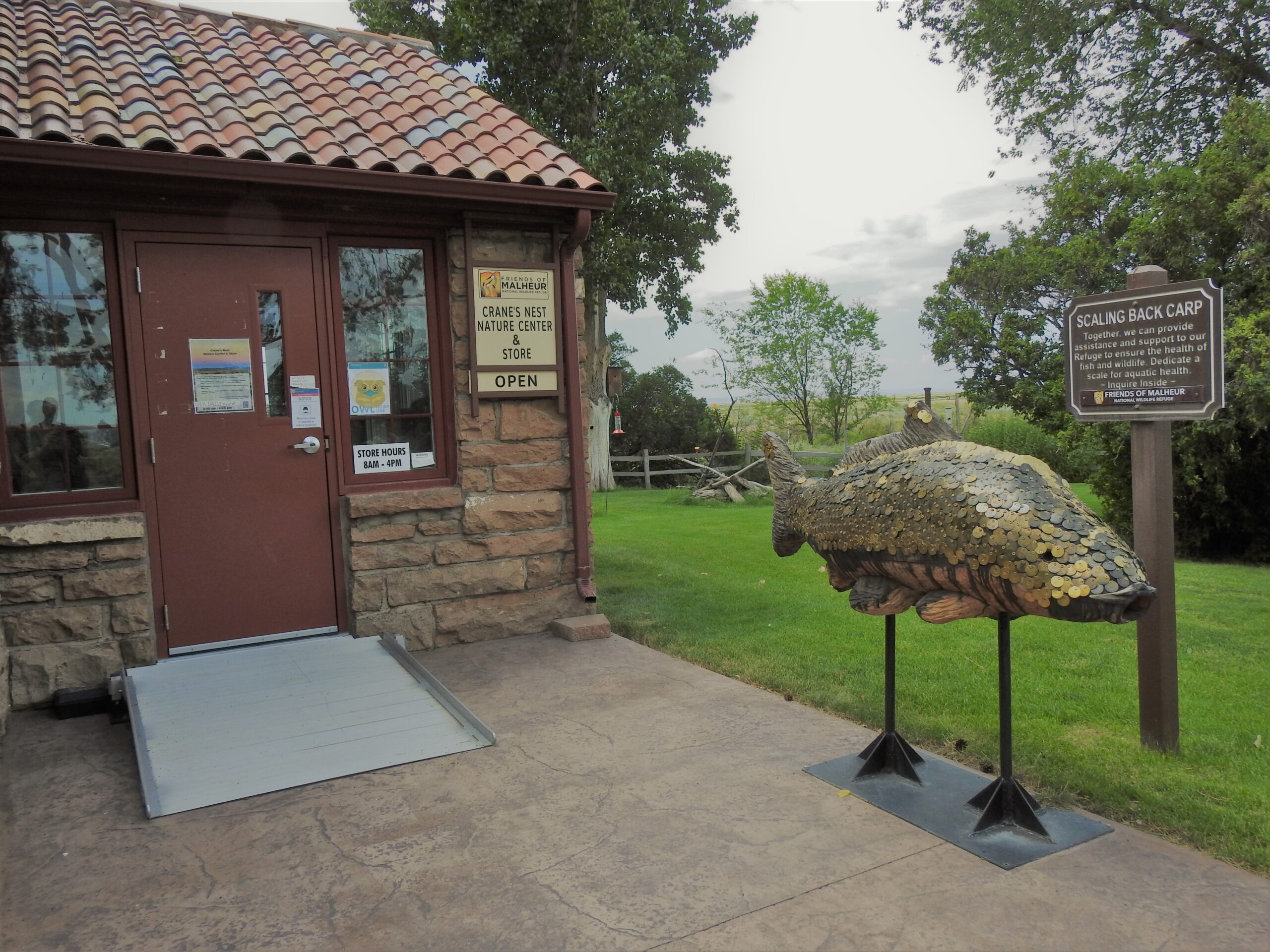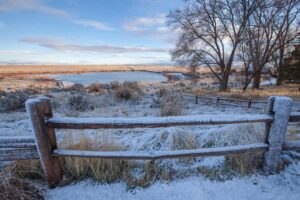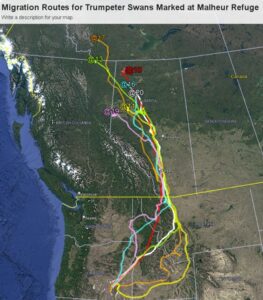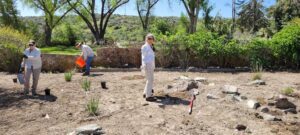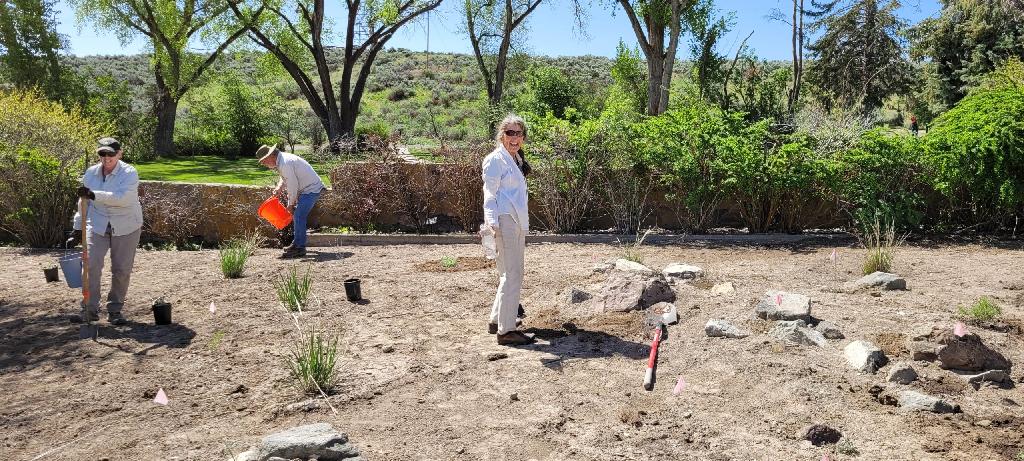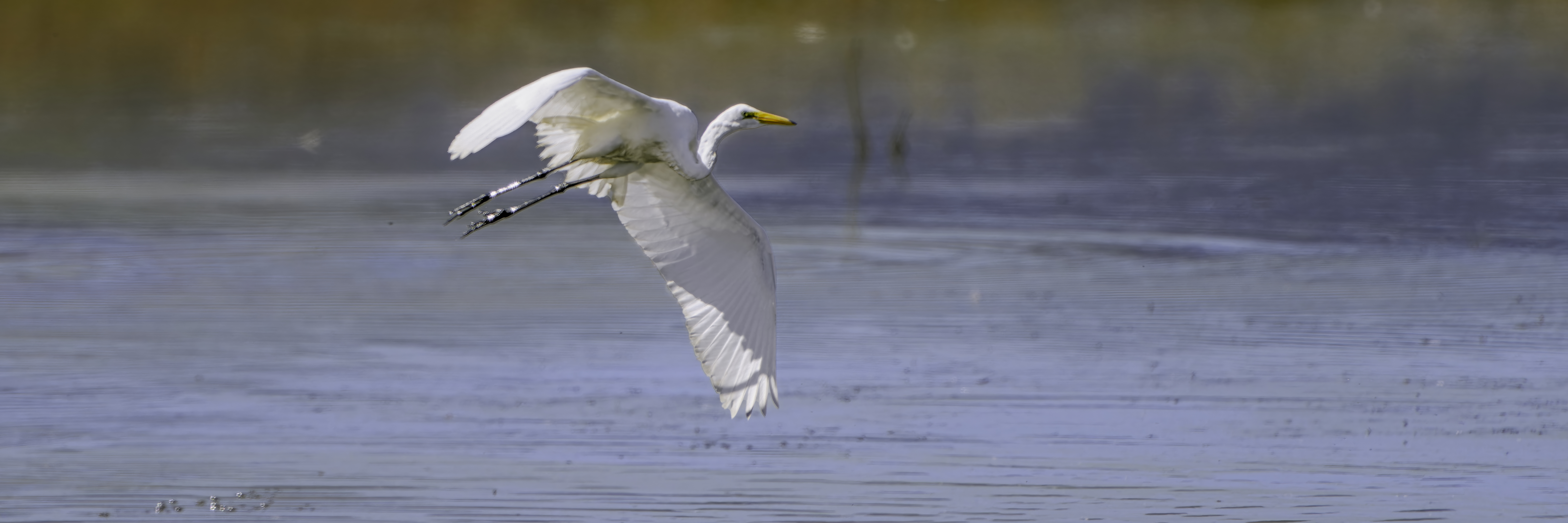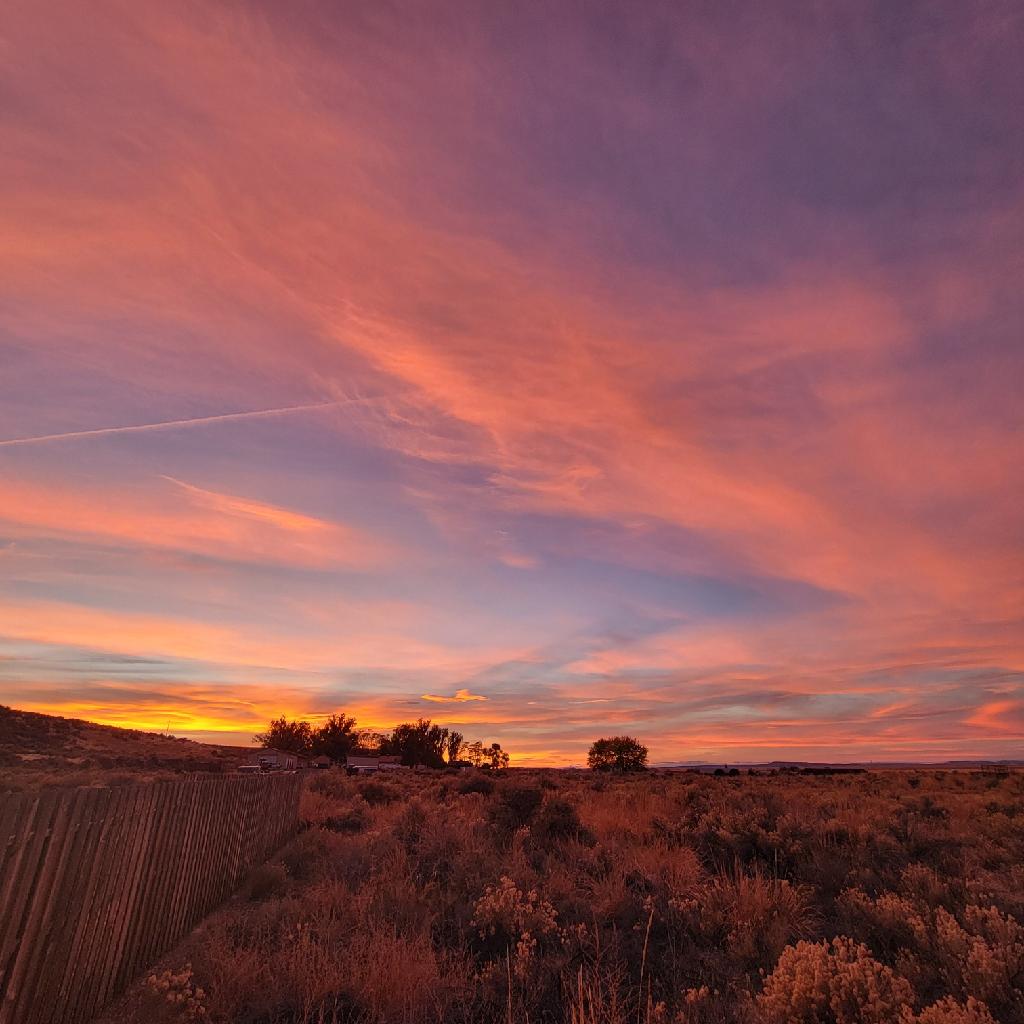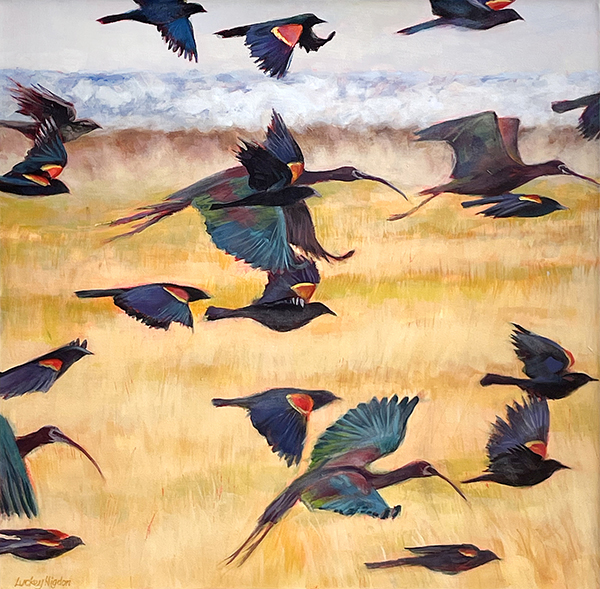By Debby DeCarlo/ Photos by Dan Streiffert
Volunteering at the Refuge is always a treat. I see plenty during the last two weeks of May and first week of June. But after that, the migratory visitors, both avian and human, diminish. I convince new visitors there is still plenty to see. And with nothing else to compare their experience to, first-timers are already impressed. “There are so many Yellow-headed Blackbirds,” they exclaim. One person noted she’d seen the Great-horned Owl. Another asked, “Are those American White Pelicans out there?” They are indeed, I tell her.


That’s Me! Working on our brand new sales register. 

The scene outside features several feeders, some oranges, and our new mister/bird bath. 

Everyone’s favorite, the yellow-headed blackbird.
I start to notice the pairs of birds coming to the bird bath we set up thanks to the generosity of Alan Contreras, President of the Friends board. The Bullock’s Oriole pair make frequent visits to the bird bath as well as the humming bird feeders. Yellow Warblers, at least 2 pairs, dart in as well. At least one nest is close enough to see through my binoculars. They’re followed by a pair of Flickers. The mosquitoes I complain about are providing food to nesting birds, as well as to bats. The California Quail family makes a swing by the Nature Center & Store at least once a day. Their young, so tiny at first, are almost full-grown. There are fewer young than there were to begin with, but I’m gratified so many survived. I am able to observe the Ferruginous Hawk nest on Highway 205 as the young progressed from being white, fluffy youngsters to being fully fledged adult-sized birds.
The vast number of Sandhill Cranes move on by mid-May, but a many nest here. I am lucky enough to see a young Crane, called a colt, with its parents. And the Bobolinks are busy with young just north of the P Ranch and near the school in Diamond.
There are other differences. Normally, I see jackrabbits. This year, it’s mostly cottontails. This quiet time, with fewer visitors and birds, frees me up to fold t-shirts we’d run out of during the busy weeks when I’d first arrived. Three boxes arrived today. Still, there’s time to check out Marshall Pond, half-dried up, but with enough water to attract three Great Egrets and one Snowy Egret, the one with the golden slippers. There’s a chorus line of Long-billed Dowitchers, with two neat rows of Forster’s Terns in front of them.
Now when new visitors arrive, I can tell them with conviction there is still plenty to see.

